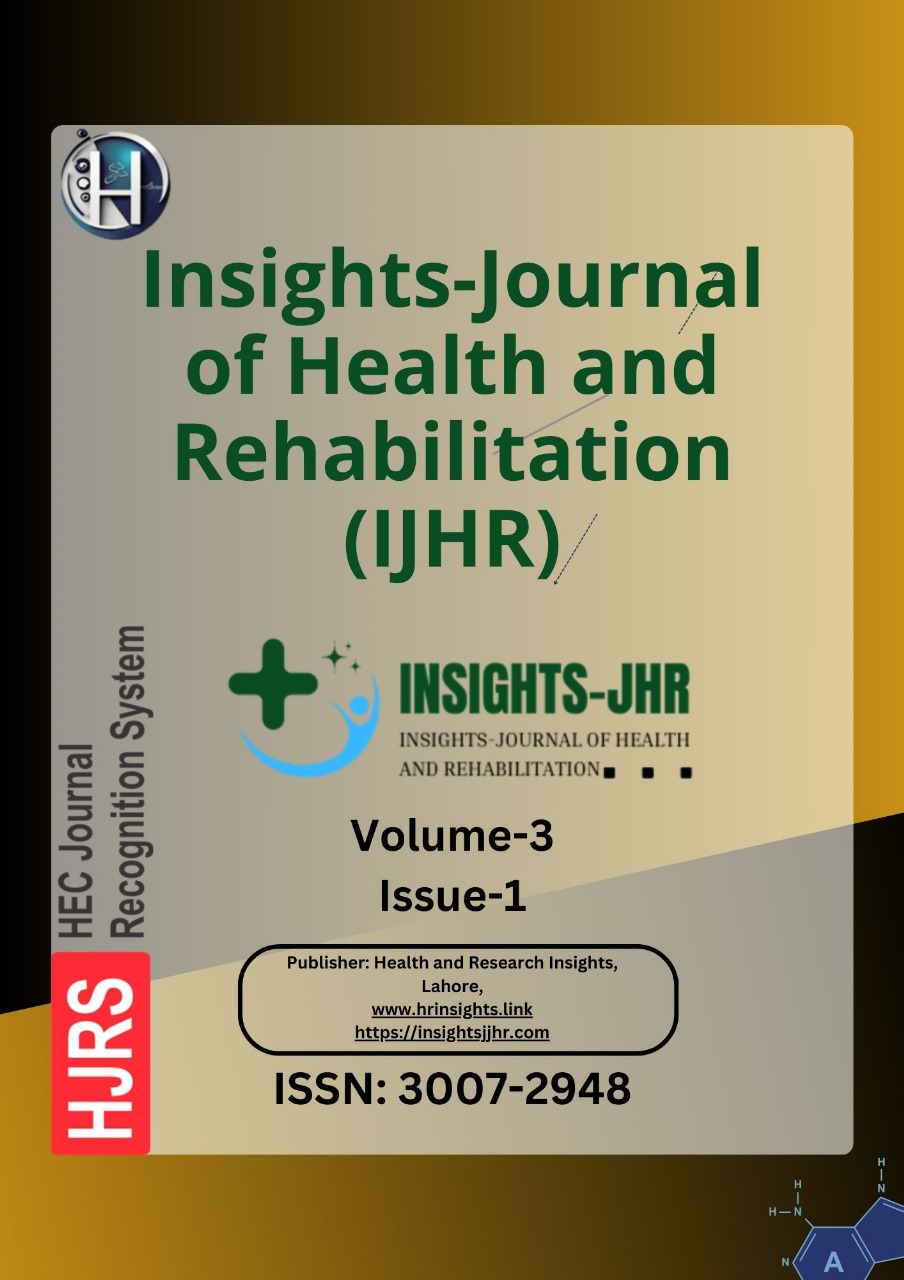PREVALENCE OF LEFT VENTRICULAR APICAL CLOT IN PATIENTS ADMITTED WITH ANTERIOR WALL MYOCARDIAL INFARCTION AT REHMAN MEDICAL HOSPITAL PESHAWAR
DOI:
https://doi.org/10.71000/ekfgbt28Keywords:
Angina, Apical thrombus, Cardiac imaging, Myocardial infarction, Risk factors, ST-segment elevation, ThrombosisAbstract
Background: Myocardial infarction (MI) results from an acute disruption in coronary blood flow, leading to myocardial necrosis and functional impairment. Left ventricular (LV) thrombus is a serious complication, particularly in anterior wall ST-segment elevation MI (AWMI), contributing to systemic embolic events and adverse outcomes. Early detection and risk stratification are essential to prevent complications and improve patient management. This study investigates the prevalence, characteristics, and risk factors associated with LV apical thrombus in patients with AWMI.
Objective: To evaluate the demographic, clinical, and echocardiographic characteristics associated with LV apical clot formation in patients diagnosed with AWMI.
Methods: A retrospective observational study was conducted at Rehman Medical Institute, Peshawar, over a five-month period. A total of 179 patients with AWMI were included, selected through convenience sampling. Patients over 20 years old with echocardiography-confirmed LV apical thrombus were included, while those with stage 3–5 renal failure or contrast allergies were excluded. Clinical and demographic data were extracted from hospital records. Statistical analysis was performed using SPSS Version 22, employing descriptive statistics, Chi-square tests, Mann-Whitney U tests, and logistic and ordinal regression analyses.
Results: Among 179 AWMI patients, 44.1% had LV clots, with 44.7% of these being apical. Clot size varied, with 55.3% classified as insignificant, 22.3% as mildly enlarged (4.1–5.4 cm), 19.6% as moderately enlarged (5.5–6.5 cm), and 2.8% as severely enlarged (>6.5 cm). Static clots were present in 15.6%, while 29.6% were mobile. A significant correlation was found between clot size and younger age (p < 0.001). Ejection fraction below 35% was associated with higher thrombus prevalence. Angina occurrence was predicted by age (B = -0.812, p < 0.001), with older patients being less likely to develop angina.
Conclusion: Left ventricular thrombus was observed in nearly half of AWMI patients, with clot size significantly associated with younger age and modifiable risk factors such as smoking, dyslipidemia, and obesity. The logistic regression model indicated high sensitivity but low specificity for angina prediction, emphasizing the need for individualized risk-based management strategies.
Downloads
Published
Issue
Section
License
Copyright (c) 2025 Asim Rehman, Muhammad Yahya, Hamza Zafar, Hidayat Ullah, Seraj Uddin, Gul Sher (Author)

This work is licensed under a Creative Commons Attribution-NonCommercial-NoDerivatives 4.0 International License.







